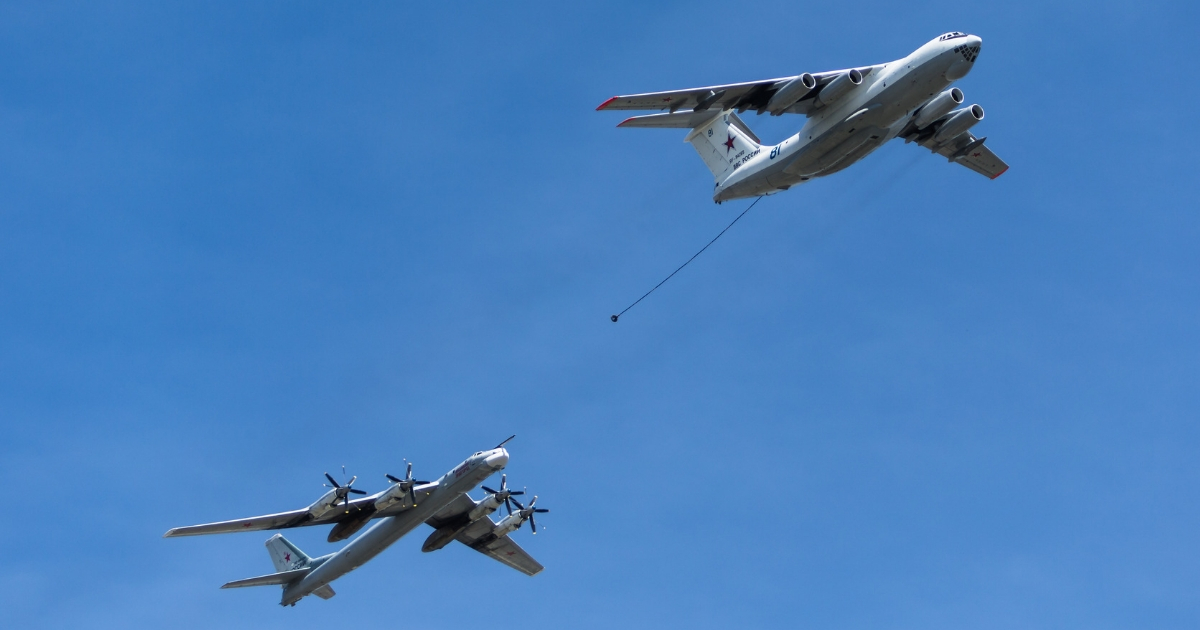
Two Russian Nuclear Bombers Intercepted Off Coast of Alaska
For the second time in the past six months, American jets confronted two Russian nuclear-capable bombers near the coast of Alaska on Saturday and chased them off.
“Two Alaskan-based NORAD F-22 fighters intercepted and visually identified two Tu-95 ‘Bear’ long-range bomber aircraft flying in the Alaskan Air Defense Identification Zone, south of the Aleutian Islands,” said spokesman for the Northern Command and North American Aerospace Defense Command Michael Kucharek, according to The Washington Free Beacon.
NORAD disclosed on Thursday that the incident occurred.
In May, two Tu-95 bombers, which are capable of carrying nuclear-tipped cruise missiles, reportedly flew over the Bering Sea, north of Alaska.
The American F-22s shadowed the bombers until they were out of Alaska’s protective zone, NORAD said.
“We do not identify the specific distance the aircraft flew from the west coast of Alaska due to operational security reasons,” NORAD wrote in its official statement, according to KTVA. “(T)he two Russian TU-95 bomber aircraft were intercepted and monitored by the F-22s until the bombers left the ADIZ along the Aleutian Island chain heading west.”
The aircraft were dispatched from Joint Base Elmendorf-Richardson in Anchorage, Alaska.
From an arbitrary point on "mainland" Alaska to around the tip of the ADIZ there is about 2000km, we were told they were intercepted south of the Islands, which suggests they were between 1000-2000km from the mainland in international airspace. 4/ pic.twitter.com/Ah0eRnWhZJ
— Steffan Watkins (@steffanwatkins) September 7, 2018
“At no time did the Russian bombers enter Canadian or United States sovereign airspace,” Kucharek said.
Russia is currently in the middle of a war exercise called Vostok-18. Russian Defense Minister Sergei Shoigu said Tuesday that the Russian exercises move into high gear on Sept. 11.
“Preparations for (Vostok-18) included comprehensive snap checks of the central and eastern military districts, the Northern Fleet, the airborne troops and long-range and military transport aircraft,” Shoigu said.
“Aircraft have been flying maximum range sorties with refueling in flight and practicing landings at tactical airfields,” he said. “Taking part in it will be about 300,000 troops, more than 1,000 planes, helicopters and drones, up to 80 combat and logistic ships and up to 36,000 tanks, armored personnel carriers and other vehicles.”
Russian aircraft have been showing off across the Pacific in recent days.
Earlier this week, the Japan Air Force scrambled fighter jets to intercept two Tupolev Tu-142MZ maritime reconnaissance and anti-submarine aircraft and a supersonic Sukhoi Su-24. The Russian planes were flying to the north of Japan, The Express reported.
Russia said the flight was a “routine flight” in “strict accordance with international rules of using airspace, without any violations of the borders of other countries.”
Russia has become more aggressive with its military flights in recent years.
In 2014, a report from the European Leadership Network said that year’s incidents alone “add up to a highly disturbing picture of violations of national airspace, emergency scrambles, narrowly avoided midair collisions, close encounters at sea, simulated attack runs, and other dangerous actions happening on a regular basis over a very wide geographical area,” according to The Washington Post.
Truth and Accuracy
We are committed to truth and accuracy in all of our journalism. Read our editorial standards.
Advertise with The Western Journal and reach millions of highly engaged readers, while supporting our work. Advertise Today.












